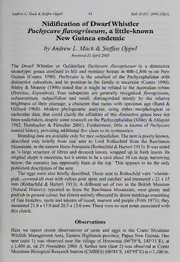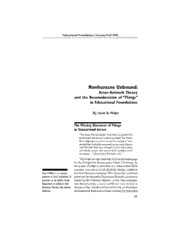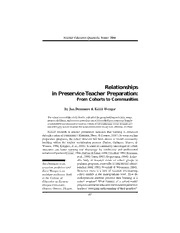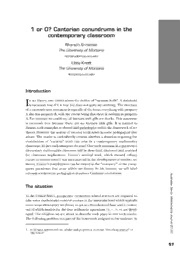
The Armies of Europe by Fedor von Kppen PDF
Preview The Armies of Europe by Fedor von Kppen
The Project Gutenberg eBook, The Armies of Europe, by Fedor von Köppen, Translated by Lord Edward Gleichen, Illustrated by Richard Knötel This eBook is for the use of anyone anywhere in the United States and most other parts of the world at no cost and with almost no restrictions whatsoever. You may copy it, give it away or re-use it under the terms of the Project Gutenberg License included with this eBook or online at www.gutenberg.org. If you are not located in the United States, you'll have to check the laws of the country where you are located before using this ebook. Title: The Armies of Europe Author: Fedor von Köppen Release Date: February 10, 2020 [eBook #61365] Language: English Character set encoding: UTF-8 ***START OF THE PROJECT GUTENBERG EBOOK THE ARMIES OF EUROPE*** E-text prepared by Brian Coe, David Tipple, and the Online Distributed Proofreading Team (http://www.pgdp.net) from page images generously made available by Internet Archive (https://archive.org) Note: Images of the original pages are available through Internet Archive. See https://archive.org/details/cu31924030725836 England. I. [LHS] England. I. [RHS] THE ARMIES OF EUROPE ILLUSTRATED. TRANSLATED AND REVISED BY COUNT GLEICHEN, Grenadier Guards, FROM THE GERMAN OF FEDOR VON KÖPPEN. ILLUSTRATED BY RICHARD KNÖTEL. LONDON: WILLIAM CLOWES & SONS, Limited, 13, CHARING CROSS, S.W. 1890. LONDON: PRINTED BY WILLIAM CLOWES AND SONS, LIMITED, STAMFORD STREET AND CHARING CROSS. CONTENTS PAGE Contents iii Preface v Translator’s Preface vii Army of the British Empire 1 The German Army 20 Austria-Hungary 36 Italy 42 France 46 Russia 53 Denmark 59 Sweden and Norway 61 Spain and Portugal 64 Switzerland 67 Holland and Belgium 69 Turkey and the States of the Balkan Peninsula 73 Appendix (Navies) 79 A list of all the illustrations has been added to this ebook. Here is a link to it: Illustrations PREFACE. “Si vis pacem, para bellum!” “Let him who is desirous of peace prepare himself for war.” Thus runs the proverb which sums up the experiences and history of the most powerful Empire of old. If this maxim held good in the old Roman days, how much more applicable is it to the present time, when war-clouds are darkening the horizon, and threaten to burst in ruin and devastation on all nations who have not heeded the warning! There are, however, few who have not heeded it, and the governments of all nations have been for some time, and are still, reorganising their Armies and bringing them to a high state of efficiency in accordance with the experience taught them by the great wars of the last thirty years. It is therefore necessary for all who take an interest in military matters, or in foreign politics, to become acquainted with the strength and organisation of the armed forces of the different European Powers, for it is only by a study of these Armies that we get to know the relative value of our own. TRANSLATOR’S PREFACE. The matter contained in the following pages has been corrected up to date. The Corrigenda at the end of Germany, France, Italy, and Russia, refer to the alterations that have taken place during the progress of this work through the press. A few words of the original text, such as “Landwehr” and “Ersatz,” have been retained in the translation, although applied to other than German countries. For their meaning, v. “The German Army,” p. 21, etc. There are no corresponding English words. G. November, 1890. England. II. [LHS] England. II. [RHS] The British Empire. Strength of Imperial Army. Mounted Infantry. (Tropical Field Kit.) Recruit‐ ment. ARMY OF THE BRITISH EMPIRE.[1] The British Army is constructed on a purely original system. It is like no other army in the world, and for this very good reason, that there is no empire in the world like the British Empire. Great Britain and Ireland alone do not constitute the Empire. India, Australia, Canada, the Cape, and shoals of other colonies in every quarter of the globe, all help to build it up, and for its defence we must have an Imperial Army constructed to fit it. Let us see what we have got. The first thing that strikes us about the Army is that, although of a decent size, it is not by any means too large —in fact, some people say that it is nothing like large enough. That, however, is a question which chiefly concerns the British taxpayer and his pocket, and with which we have nothing to do at this moment, so we will confine ourselves to contemplating its actual size. The Empire contains, roughly, over 9,000,000 of square miles, and over 326,000,000 of inhabitants. To defend these we have an Army which numbers roughly as follows:— Regular Forces 202,000 1st and 2nd Class Reserves 57,000 Militia and Militia Reserve 134,000 Yeomanry 11,000 Volunteers 224,000 Colonial Forces 84,000 Indian Native Army 152,000 altogether, 864,000 men at the outside. This apparently large number, however, includes every single able- bodied man, British or Native, who has been trained to bear arms: the Regular Army forms not quite a quarter of it. Taken altogether, this gives an average of about 1 combatant to 350 non-combatants—not a large proportion. Germany’s proportion is 1 to 99. This is a large proportion, it is true, but then she is threatened by powerful enemies on her eastern and western frontiers, whereas we are an island, and look to our Navy as the first line of defence. This being so, we can do with a moderately small Army, and need not (yet) have recourse to the system of all other European countries—namely, universal conscription. It is absolutely necessary, however, that we should follow the principle which underlies the military systems of all countries, whether their armies are composed of conscripts or not. This principle is that of keeping a small number of troops under arms in peace-time, with a large reserve of trained men ready to be called out in case of war. In our case, the small number under arms in peace-time is represented by the Active Army, both British, Indian, and Colonial,[2] and the large reserve by the 1st and 2nd Class Army Reserves, the Militia, the Militia Reserve, the Yeomanry, and the Volunteers. Before starting on the details of these different forces, it would be as well to give the mode of enlistment and terms of service of the British soldier, with a slight sketch of his history. The system of recruitment throughout the Army is that of voluntary enlistment. As mentioned above, we are the only country in Europe whose soldiers are thus enlisted. The subjects of all other European countries are liable to be enrolled in the army whether they like it or not, and, as a rule, they do not like it. This voluntary enlistment is a great advantage for us in one way, in that only those need be soldiers who want to be; but, on the other hand, the strength of our Army is chiefly dependent on the number of men who happen to fancy soldiering, and this is hardly a matter for congratulation. Up till now, the system has sufficed: let us hope we shall never have to change it. It is not generally known that there exists an Act[3] which has to be suspended annually by Parliament (or else it would now be in force), by which the Crown is empowered to raise by ballot as many men as may be necessary for the Army. In other words, the country is liable to conscription, as far as may be determined by the Crown’s advisers. This Act has, however, not been enforced since 1815. N.B.—This mode of raising troops must not be confounded with the “Embodiment of the Militia,” of which more hereafter. Recruiting is carried out by paid recruiters (non-commissioned officers) in the different districts. Formerly, the recruiting-sergeant used to clinch the bargain with the would-be recruit by presenting him with a shilling, on which the recruit usually got drunk. The “Queen’s Shilling” has, however, been done away with, and the recruit has now to get drunk at his own expense. After going through certain formalities and answering certain questions before a magistrate, the recruit signs his “attestation-paper,” and is then considered as enlisted. The terms of service are, as a rule, seven years with the colours and five years thereafter in the Reserve. There are a few exceptions to this; men joining the Household Cavalry, Colonial Corps,[4] and one or two other smaller branches of the Service, enlist for twelve years with the colours; men for the Royal Engineers or Foot [Pg 2] [Pg 3] Cavalry. (Tropical Field Kit.) Officers of Highland Light Infantry and Argyll and Sutherland Highlanders. Sketch of the History of Our Army. Officer, 5th (Northumberland) Fusiliers. Organisa‐ tion. Cavalry. Guards have the alternative of the usual term, or three years with the colours and nine years in the Reserve; whilst the Army Service Corps and Medical Staff Corps men and a few others serve for only three years with the colours and a varying term of years in the Reserve. Recruits, at the date of their enlistment, must have the physical equivalent of 19 years of age, must be at least 5 ft. 4 in. high, and must have a minimum chest-measurement of 33 inches.[5] Re-engagements up to seven or twelve years with the colours are permitted in most, and up to twenty-one years in special, cases. At a very early period of English history every able-bodied man was bound to take up arms in the event of a civil war or invasion. He was, however, only liable to serve in his own county. This force thus formed was called the General Levy. During the Middle Ages the feudal system was in force, i.e., the retainers, tenants, and vassals of every knight were required to attend their master if he went to fight abroad. The knights in their turn were bound to attend the king when he went to fight abroad, and thus a very respectable army was formed for the time being. This army, i.e., the knights and their followers, was called the Feudal Levy. Towards the end of the sixteenth century, members of the General Levy were told off for the service and defence of the Crown. They were trained and exercised in the profession of arms, and received the name of Trained Bands. The Honourable Artillery Company, a similar force, was raised about this time. The Sovereign could, if necessary, hire additional mercenary soldiers to assist him in war, and these were paid by Parliament. The Civil War, however, in Charles I.’s reign, upset the general military system, and for some time there was no National Army. On the Restoration, in 1660, considerable changes and improvements took place. The Feudal Levy was abolished, the General Levy became the Militia, and the foundations were laid of the present Standing Army. It may be news to some people that the “raising or keeping a standing army within the kingdom in time of peace is against law,” but such is the fact. Parliament has every year to specially notify its consent to a standing army; otherwise the Army would cease to exist. Since Charles II.’s time, the Standing Army has gradually been increasing and improving. Voluntary enlistment dates from his reign, but it apparently has not always been sufficiently productive of men, for we find in the last century that debtors and criminals were obliged to serve in the ranks, in order to keep the Army up to strength. The pressgang was also in force till 1780. It is hardly astonishing then that some, nay, a great many, ill-educated people have been taught, by means of traditions handed down from their great-grandfathers, to look upon the Army as a sink of iniquity, and that they still hold extraordinary and utterly unreasonable views on the subject. They need be under no apprehension about letting their sons and relations enlist. The Army is now composed of a very good class of men, drawn chiefly from the labouring and not from the criminal classes (as some people seem to imagine). The proportion of educated recruits is rapidly increasing, a better class of men is now enlisting, and the military crime of to-day is absurdly small as compared with that of twenty years ago, and is still decreasing. The Active Army is divided into— 1. The Regular Army; 2. The Native Indian Army; and 3. The Colonial Forces. 1. The Regular Army consists of Cavalry, Artillery, Engineers, and Infantry; besides these are the non- combatant branches, consisting of the Army Service Corps, the Ordnance Store Corps, the Medical Staff Corps, the Pay, Medical, Chaplains, and Veterinary Departments, and a few more. The Cavalry consists of 31 regiments, including— 2 Regiments of Life Guards (Household Cavalry). 1 Regiment of Royal Horse Guards (Blues) (Household Cavalry). 7 Regiments of Dragoon Guards (1st to 7th). 3 Regiments of Dragoons (1st, 2nd, and 6th). 5 Regiments of Lancers (5th, 9th, 12th, 16th, and 17th). [Pg 4] [Pg 5] Sergeant-Drummer, Coldstream Guards. 13 Regiments of Hussars (3rd, 4th, 7th, 8th, 10th, 11th, 13th to 15th, and 18th to 21st inclusive). The British Cavalry is the smartest in the world. In the Cavalry of nearly all foreign armies, Germany for instance, and France, the horses are trained to a degree that is unheard of in the English arm; thus their men require but little skill in riding, and may be described as good soldiers on horseback. Ours, on the contrary, are born horsemen, and do not need to have their horses so thoroughly trained. The consequence is that when our men find themselves in a predicament not provided for by the Regulations, their natural qualities stand them in good stead, and by their brilliant riding and dash they turn to good account a situation which might otherwise offer serious difficulties. The British Cavalry is divided into Heavy, Medium, and Light, according to the size and weight of the men. The Household Cavalry, 1st and 2nd Dragoons, are heavy, and are never quartered abroad, the Hussars are light, and all the rest are medium Cavalry. The Life Guards, Dragoon Guards (except the 6th), Dragoons, and 16th Lancers wear scarlet, the remainder of the Cavalry dark blue, tunics. The Life Guards and Blues are the only regiments who wear cuirasses, and these they would probably leave behind on active service. They, the Dragoon Guards and the Dragoons (except the 2nd Scots Greys, who wear bearskins), wear steel or brass helmets, with plumes varying in colour according to the regiment. The Lancers wear the well-known Lancer cap, with the scarlet[6] “plastron” in front of their tunics. The Hussars wear the busby, with busby- bag and plume of different colours according to the regiment; and they have also six rows of yellow braid across the front of the tunic. All the Cavalry wear dark blue pantaloons[7] or overalls, with red, white, or yellow stripes, and the Household Cavalry has in addition white leather breeches and jackboots for full dress. The Cavalry forage-cap is a small round one, and always worn over the right ear. Their arms are sword and carbine throughout; the Lancer regiments in addition carry the lance of male bamboo, and with a red and white pennon. The Cavalry carbine is of the Martini-Henry pattern, with a bore of ·450 in.; it is sighted up to 1,000 yds., and is a first-rate little weapon. The establishment of a Cavalry Squadron (2 troops) in the field is:— 6 officers, 16 non-commissioned officers, and 122 rank and file, of whom 26 are dismounted, and 144 horses, including draught-horses. A Regiment (4 squadrons) is composed of:— 1 lieutenant-colonel, 3 majors, 6 captains, 16 subalterns, and 6 other officers, including adjutant, quartermaster, surgeon, paymaster, and 2 “vets.” 75 N. C. O.’s, 666 rank and file, and 614 horses. A Cavalry Brigade numbers 3 regiments, and details altogether 114 officers, 2,280 men, and 2,200 horses. A Cavalry Division numbers 2 brigades (6 regiments), 2 batteries Horse Artillery, 1 battalion Mounted Infantry, and details altogether 325 officers, 6,600 men, and 6,500 horses. Artillery. The Artillery forms one “Royal Regiment,” consisting of:— 20 Batteries of Royal Horse Artillery, 80 Batteries of Field Artillery, 10 Mountain Batteries, and 96 Garrison Batteries, with several depôts and 3 depôt batteries for their maintenance and supply. The Horse and Field Batteries are formed into groups of 2 or 3 batteries, chiefly for tactical reasons, called Brigade Divisions, each under a lieutenant-colonel. A Horse Artillery Battery consists of 1 major, 1 captain, 3 subalterns, 21 N. C. O.’s, and 160 men (of which 73 are drivers), 193 horses, 6 guns, 6 ammunition wagons, and 7 other wagons. A Field Artillery Battery of much the same, but with 9 men and 52 horses less. [Pg 6] Engineers. The guns in use are at present of four different patterns:— Weight of Shell. Calibre. Sighted up to. Are Armed with it. a 12 lbs. 3 in. 5,000 yds. 14 R. H. A. and 29 F. A. batteries. b 13 lbs. 3 in. 4,800 yds. 1 R. H. A. and 12 F. A. batteries. c 16 lbs. 3.6 in. 4,800 yds. 2 F. A. batteries. d 9 lbs. 3 in. 3,500 yds. 5 R. H. A. and 37 F. A. batteries. Of these patterns, the 12-pounder alone is a breech-loader; the others are muzzle-loaders. The 12-pounder is being issued as fast as possible to all R. H. A. batteries. The F. A. will be divided into Light and Heavy Field Artillery, the former of which will receive the 12-pounder B.-L. gun, and the latter a new pattern 20-pounder B.-L. gun, with 8 horses to a team. When this is done, the R. H. A. will probably receive a new 10-pounder B.-L. gun. 2 guns and wagons together are called a Section; 1 gun and wagon, a Sub-division. A Garrison Battery is variously constituted, according to its locality. The men of the battery have to work guns of all sorts and sizes in the different forts where they are quartered, and, as a rule, have no guns of their own. Of the 96 Garrison Batteries, 4 are Siege-train batteries, quartered in the United Kingdom, and armed with heavy guns for battering purposes, and 4 more are “Heavy” batteries, quartered in India, the guns of which are drawn by elephants and the wagons by bullocks. The Garrison Artillery is grouped in 3 divisions: the Eastern (29 batteries), Southern (42), and Western (25). Although these divisions are by way of corresponding with the different points of the compass in Great Britain, the batteries composing them are scattered in every quarter of the globe, and the Militia Brigades attached are not necessarily Eastern, Southern, and Western ones. The Mountain Artillery is armed with 2½-inch 7-pounder jointed guns, each gun and gun-carriage being carried in pieces on 5 mules. One battery is in England (Newport), one in South Africa, and the rest in India. The Royal Malta Artillery is for the defence of that island, and is composed of Maltese officers and men. Men of the Horse Artillery are dressed in dark-blue Hussar-like jackets, and busbies with a white plume and scarlet busby-bag; the remainder of the Artillery in dark-blue tunics with red facings, and black felt helmets with a brass ball instead of a spike. They are armed with Martini-Henry carbines, and either sword or sword- bayonet, according to their branch of the arm. The forage-cap is a small, round, brimless one, with a band of orange braid. The corps of Royal Engineers is divided into a number of battalions, depôts, and other units, which are given below as far as possible. As will be seen, their duties, and especially those of the officers, are extremely various. The officers are employed sometimes with their men and sometimes apart from them. A large number of R. E. officers (between 350 and 400) serve in India, in connection with Native Engineer troops; others are employed either at home or in a colony on staff work, public works, Military Schools, the Ordnance Survey, military telegraphy and railways, Engineer Militia and Volunteers, and a host of other duties too numerous to mention. In fact, the Engineers form the Scientific Corps of the Army. The officers are trained in the R. M. Academy at Woolwich, and the rank and file are nearly all well-educated men, skilled mechanics and trained workmen forming the bulk of them. That their work does not interfere with their worth as soldiers has been shown on many a field, and individual instances of their gallantry are numerous. Formerly the Corps was composed of a large number (about 40) of independent companies, split up and quartered throughout the Empire. Now they have been collated together and formed into different battalions and other units, according to their work. The Corps is now composed as follows:— (a.) A Bridging Battalion, consisting of 2 pontoon troops, each troop numbering 5 officers, 28 N. C. O.’s, and 183 men, with 20 pontoon- and 8 other wagons, and 190 horses. Each troop carries the material for 120 yards of pontoon-bridge. (b.) 2 Field Battalions, each of 4 companies. The companies however still preserve their independence to a great extent, being quartered in widely divergent localities, according to requirements. The 1st Battalion consists of the former Nos. 7, 11, 17, and 23 independent companies, and the 2nd of Nos. 12, 26, 37, and 38. A Field Company consists of 7 officers, 26 N. C. O.’s, 184 sappers, etc., 70 horses, and 13 vehicles. A proportion of the company, from one-fifth to one-third, is mounted. [Pg 7] [Pg 8]
The list of books you might like

Mind Management, Not Time Management

Do Epic Shit

As Good as Dead

The Subtle Art of Not Giving a F*ck
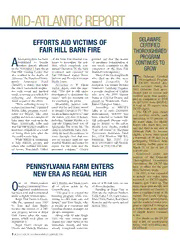
Mid-Atlantic Thoroughbred January 2006

O Egito Antigo
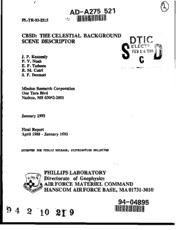
DTIC ADA275521: CBSD: The Celestial Background Scene Descriptor

böbrek nakli alıcı adayı değerlendirmesi
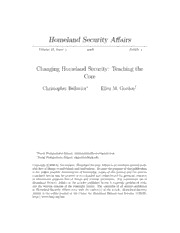
DTIC ADA484047: Changing Homeland Security: Teaching the Core

Full Circle Magazine FR
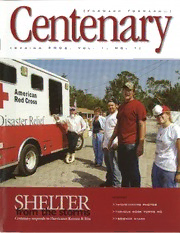
Centenary Magazine
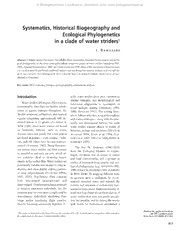
Systematics, Historical Biogeography and Ecological Phylogenetics in a clade of water striders
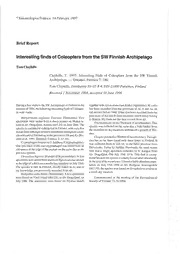
Interesting finds of Coleoptera from the SW Finnish Archipelago
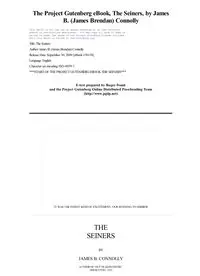
The Seiners by James B James Brendan Connolly

mortgaged lives
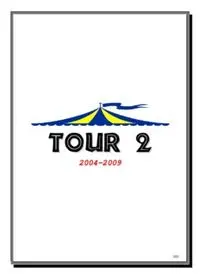
Live to Cirque

Química 1.
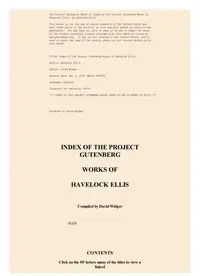
Works of Havelock Ellis

1 2013 ANTITRUST YEAR IN REVIEW - American Bar Association
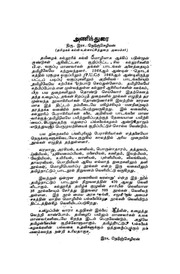
வாழ்வியற் களஞ்சியம் தொகுதி - 15 : இணைப்புத் தொகுதி
